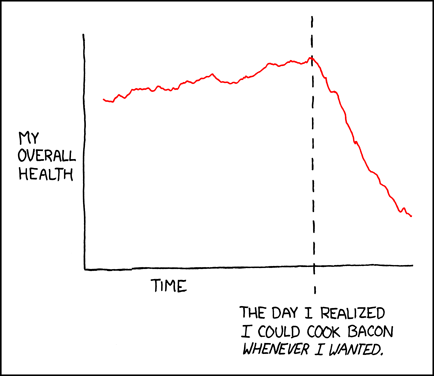"There's a lady I know
If I didn't know her
She'd be the lady I didn't know.
And my lady, she went downtown
She bought some broccoli
She brought it home.
She's chopping broccoli
Chopping broccoli
Chopping broccoli
Chopping broccoli
She's chopping broccoli
She's chopping broccoli
She's chop.. ooh!
She's chopping broccola-ah-ie!"
-Dana Carvey
This post is more about terminology than actual knife technique. I slice and chop well, but there are better resources for that sort of thing. My purpose is to let you have an idea of what people are talking about when they say 'dice' or 'julianne'.
Here's something important before you begin: make sure your knife is SHARP. Nothing cuts a fella faster than a dull knife. Ironic, I know!
Julianne
Julianne is a fancy-pants word for slicing into small sticks. Matchsticks. Now you know. This is part of the larger category of slicing. You'll often see "cut into 1 inch slices," and the like. It means pretty much what it means. Don't get your ruler, just use your eyes. No one will be measuring when they eat.
Dicing
Dicing is, basically, cutting into uniform squares. You dice when you're looking for smaller chunks than a slice, with more surface area. Dicing is great when you have a few different kinds of veggies and you want them all to cook at around the same pace. Again, no need to be exact- but do try to be in on the same playing field.
Chopping
Chopping is fun. Nothing to worry about. In fact, it's a great stress reliever. Take your knife and chop away. You chop to blend things into other things. Want garlic in a sauce, but don't want chunks- chop away! Be advised- when you chop you release more of the flavor, so make sure to taste as you add.
"At a 45 Degree Angle"
Why cut at a 45 degree angle? Well, to maximize surface space. More bang for the buck, greater area for browning, it looks pretty. You can see from the photo above that you get a lot more carrot by cutting at an angle. No protractor needed, just tilt your knife to what you think is about 45 degrees. Good times.
Take your time and practice. You're not going to be perfect straightaway, but who cares. As long as you're in the general area, you're all good. Leave perfection for those snotty French chefs, eh?!







































